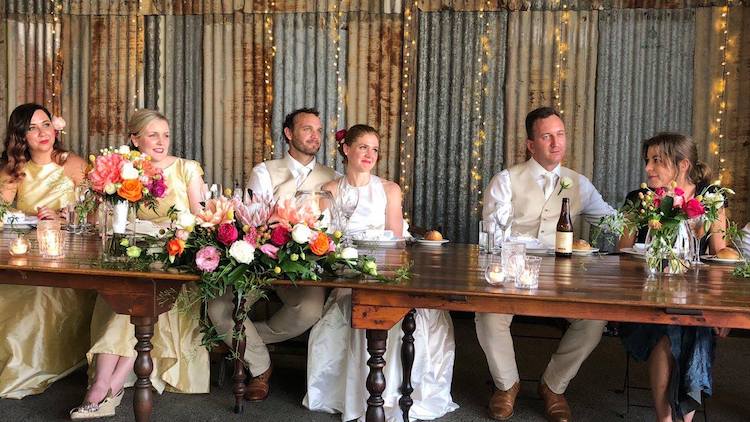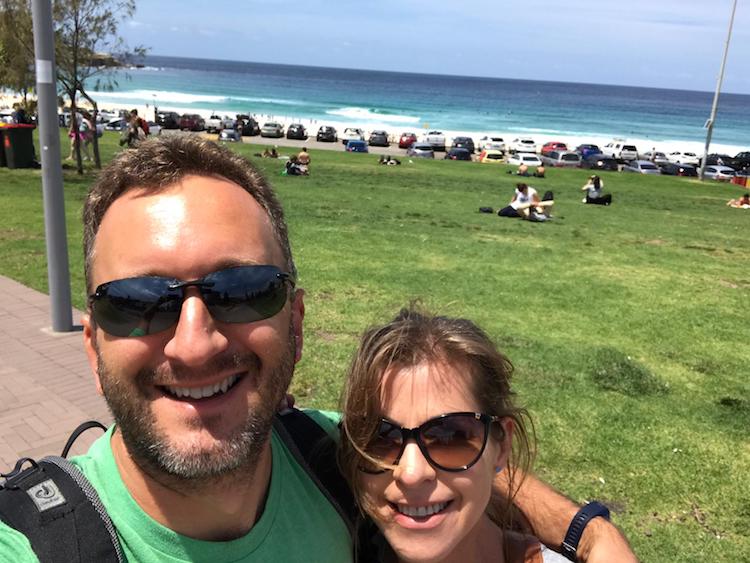14 November 2018 Tam is flabbergasted by her first-ever trip Down Under.
I’ve never been much of a drinker of Australian wine.
It’s surprised me the number of people who, on hearing my strange hybrid Afro-English accent for the first time, assume that I must be struggling to adjust to the cold (after 24 years in England), drink New World, prefer high alcohol, and feel that they must suddenly start talking in some god-awful off-take of a Hollywood version of vowel-scythed-horizontal Afrikaans English.
Yet most of the wines in my home cellar are German Rieslings and Spätburgunders, Loire Chenin and Cabernet Franc, red and white burgundy (village level mostly, alas). I like to drink high-acid, low- to medium-alcohol, small-family-made wines, preferably organic, biodynamic or on the more conservative end of the natural-wine spectrum. Australia has largely represented, to me, the very opposite of everything I like in a wine.
Thus it was deeply humbling to spend three weeks travelling around Australia. Some work, some play, some friends and lots of wine, but through it all to realise that my concept of Australia, in terms of people, wine, climate, soils, terroir, has been deeply clichéd, out of date, unfair, caricatured, and way too generalised to be even vaguely accurate.
In part, I blame the cheap Australian wine I drank as a poor and ignorant immigrant to the UK a quarter-century ago, and I partly blame the WSET to which I owe most of my Australian wine knowledge. That was over 10 years ago and I’m sure the WSET has updated their content since then, but between these two poles I developed a snobbish disdain for Australian wine that has persisted, shamefully, until October 2018.
We were in Australia because my husband was best man for a wedding on the Sunshine Coast in Queensland, and to say that I was resentful was an understatement. I didn’t need the time away from work, I didn’t want the time away from home (I missed harvesting my lovingly planted and tended kalettes) and I wanted to spend my travel budget and annual leave on Slovenia. (Brad and Tam Currin are on the extreme right of the wedding pic below.)

But we had to go, and because I have Lutheran blood in my veins, I was not going to waste the airfare on a Sunshine Coast beach party. I tacked on Tasmania, Yarra Valley, Mornington Peninsula, Gippsland, the Great Ocean Road (which ran through Coonawarra and Padthaway, even if we barely stopped), Clare Valley, Eden Valley, Barossa and McLaren Vale. Wine lists were scoured, wine shops ransacked, and wines from everywhere else were tasted at every opportunity. A total of 52 producers, 15 GIs (Geographical Indications) and 4,325 miles (6,960 km) were covered in 18 days.
The lack of email contact may have caused Jancis to worry that I’d fallen off the bottom of the earth. To be fair, most of the time I felt as if I’d fallen down a rabbit hole somewhere near the bottom of the earth.
Australia was not what I expected.
I hadn’t expected the piercing light of the Tasmanian sun nor bone-chilling evenings in McLaren Vale. I hadn’t expected perfumed, delicate Cinsault from Barossa nor glossy Nero d’Avola from Clare Valley. I’d expected jammy fruit, high alcohol and technically perfect wines from wineries gleaming like pre-patient operating theatres. What I hadn’t expected was the tremendous clarity and purity of the ripe, sweet fruit; alcohols down to an untampered-with 9% for a dry wine still packed with flavour; scores of cloudy and orange natural wines buzzing with character; winemakers clambering over ancient barrels in cobwebbed sheds.
I’d expected brash, defiant, salty, confident and technological competence. I got brash, defiant, salty, confident and technological competence alongside, and totally entwined with, passion, refinement, brilliance, intellect, instinct, rebellion, art, culture, beauty and a deep and deeply captivating sense of purpose.
I’d expected an approach to viticulture and winemaking that was wholly commercial and chemically dependent, and I’d expected the majority of producers to be broadly and generally sceptical about sustainability. What I hadn’t expected was how much more seriously Australia takes organic certification than the EU, and how many Australian producers are quietly, without fanfare, making changes to the way they operate because they’re seeing the effects of climate change in their vineyards right now.
Spanning hands around the thigh-size trunks of vines planted in 1853, watching a kangaroo and her baby grazing between Riesling rows at dawn, kneeling in a vineyard sifting tiny Oxalis pes-caprae bulbs – natural weed control – through my fingers, and bracing myself against a biting wind while learning the differences between native wallaby grass, irongrass and weeping rice grass – these were not on my pre-October list.
Neither were the wines that took my breath away: their spine-tingling acidity, translucent fruit, gossamer-fine tannins, cut-marble structure.
Australia – the tiny fraction I saw – took my (mis)conceptions and splintered them into amazement.
On the very last day of our wine travels, we visited Chester Osborn’s Cube. I wouldn’t want to spoil it for any tourist hoping for a Twitter moment in the toilets or on the stairs, but it was a fitting end to our three-week trip. You walk out of that wondering when and where you started, how long you may have been in there, and whether you will ever see things in the same way again. The only difference is that I can’t wait to get back to Australia.
(In my photo above right is one of Prue Henschke's tiny little native Goodenia ovata, lifting frost-battered petals to the spring sunshine. Brad and I are pictured on Bondi Beach below.)














